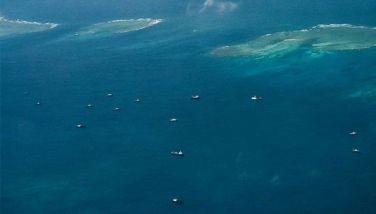Combating online child exploitation with technology, policy

Kids are spending much more time online because of COVID-19. Yes, the internet allows young people to continue learning in the absence of face-to-face classes. But at the same time, it is also a source of threat and potential abuse.
With kids now spending more time online, the levels of risk to which they are exposed have increased. Malicious activities like cyberbullying, doxing and phishing abound. This makes the world wide web a dangerous place, especially for children.
Fortunately, many operating systems and app suites have built-in parental controls. This feature allows parents to put up safeguards limiting how their kids experience the internet.
The most common use of these parental control features restricts kids’ Screen Time. This feature allows parents to set time limits for specific apps or even lock down devices at bedtime on school nights. More importantly, most parental controls also allow you to restrict in-app purchases, access to explicit content and blacklist certain websites.
But these built-in parental controls have their limits. For instance, parental controls built into one operating system don’t work in apps from another developer. So parents may think their kids are safer since they've restricted access to explicit content on their iPad through iOS’s Screen Time feature.
However, if the child uses a third-party browser, iOS's restrictions won’t apply. This is because Google has its own parental control feature called Family Link, and this needs to be set up separately. Similarly, parents can limit location sharing on Windows 10 laptops to family members only. But what’s to stop your kid from sharing their location through chat while playing online games?
There are many ways parents can try to make the internet safer. But kids can still be exposed to traumatic online content and malicious activity. But so far, we’ve only talked about kids as users. Imagine the danger and trauma children are exposed to when they are the content.
Earlier this week, groups from different sectors came together in an event on February 8, Safer Internet Day. They intended to raise awareness for the continued rise of online sexual abuse and exploitation of children (OSAEC) in the Philippines.
According to UNICEF, the Philippines has emerged as the center of child abuse materials production globally. In many cases, the abuse is facilitated by their desperate parents, who resort to producing illicit content of their children to make ends meet.
During the event, Prof. Louie Montemar of consumer group BK3 pointed out the long-term traumatic effects of OSAEC. He said this damaging trauma could stay with a child for years and impact their mental and physical well-being.
Sadly, the trend has just gotten even worse over the last couple of years. According to Emma Hardy of the Internet Watch Foundation (IWF), their 2020 report found a dramatic 77% increase in the amount of “self-generated” abuse material as more children and more criminals spend more time online.
According to UNICEF’s Ramil Anton Villafranca, OSAEC cases in the Philippines have increased by 265% over the last two years. Their report showed that there had been 220,000 new OSAEC cases since the beginning of the COVID-19 lockdowns. “There is an urgent need to address online sexual abuse and exploitation of children, especially with the growing digital landscape,” he added.
The country’s OSAEC problem runs deep. There are social and cultural aspects to it, but also technological and policy aspects as well. A whole-of-government approach is not enough to even begin to address this problem. What OSAEC requires is a whole-of-society approach.
For instance, there are technology-based solutions that Internet Service Providers (ISPs) can put in place. An example of this is the $2.7 million content filtering systems that Globe Telecom put in place. This system block websites and online imagery that promote child pornography and piracy.
However, like the app-based parental controls I mentioned earlier, technology-based solutions like ISP site blocking can only do so much. We also need to raise awareness and educate Filipinos about the continued rise of OSAEC in the country. Globe’s Yoly Crisanto said that in addition to investing in content filtering systems, they’ve also partnered with the Department of Education to roll out learning materials.
Lawyer Tim Abejo of the consumer advocate group CitizenWatch Philippines echoed the call for raising awareness and better education to combat OSAEC. He cited how the irresponsible use of technology and the low computer literacy of both children and parents have increased the risk of exploitation.
But Abejo also spoke about solutions on the policy side of the OSAEC issue. He pointed out existing laws to protect children against OSEAC: the Anti-Child Pornography Act of 2009, the Anti-Trafficking in Persons Act of 2003, the Cybercrime Preventions Act of 2012, and the Special Protection of Children Against Abuse, Exploitation, and Discrimination Act.
However, because these laws are overlapping and often interpreted in contradicting ways, Abejo says pursuing a case becomes more difficult. Instead, he suggests that the government create an integrated framework with ISPs and law enforcement agencies to combat online exploitation.
Indeed, the rise of OSAEC in the Philippines over the last two years is disturbing. And with the growing role of the internet and technology in our daily lives, the risk of online threats and dangers will increasingly be present.
Because these risks are ever-present, technological, social and policy solutions should be put in place to reduce them. The government, private sector, and civil society must remain committed to upholding children’s rights. Only through a combined effort can we make the internet a safer place for our kids.
Paco Pangalangan is the executive director of think tank Stratbase ADR Institute.
- Latest




























